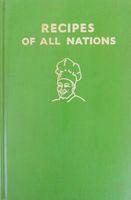Label
All
0
Clear all filters
Sardinia
Appears in
Published 1935
From this mountainous and rugged island, with its fine scenery, so wild and desolate in certain parts, we get some strange and interesting dishes, highly characteristic, and belonging essentially to a people who cling fondly to traditions. Their almost jealous cult of tradition is reflected in all their cooking, which, in certain parts of the island especially, has been the same for many centuries. They are sober in their fare, and their isolated position in former days, when imported foodstuffs were difficult to obtain and consequently expensive, resulted in a national cookery of a somewhat simple and modest kind. But the one thing that the Sardinian likes above all things is his bread, and the making of it is almost a ritual. In many a peasant home there is a stone mill worked from morning to night by a donkey, and the womenfolk sort out the different kinds of flour, and prepare the bread. This is generally very white, somewhat hard, but very tasty when quite fresh. It also keeps well. The shepherds who live in some of the remote parts, and have to carry food for several days, bake it a second time, when it will keep fresh for nearly a fortnight. There are all manner of breads in Sardinia, varying in different parts of the island. There is the ordinary flour bread—the Tunda or Tundus—which is a round loaf; Lottura is a cake-like bread, and Pizzos is a white bread of an elongated form, hailing from the Planargia. Bread made of the finest flour is called Pan ’e Scetti, and a bread made of bran is called Pan ’e Simbula. There are many other varieties of Sardinian bread, and in the towns a special one is made for foreign visitors, which is called Fini or Franzesu.
Become a Premium Member to access this page
Unlimited, ad-free access to hundreds of the world’s best cookbooks
Over 160,000 recipes with thousands more added every month
Recommended by leading chefs and food writers
Powerful search filters to match your tastes
Create collections and add reviews or private notes to any recipe
Swipe to browse each cookbook from cover-to-cover
Manage your subscription via the My Membership page
Best value
In this section
Part of
Advertisement
Advertisement
The licensor does not allow printing of this title


